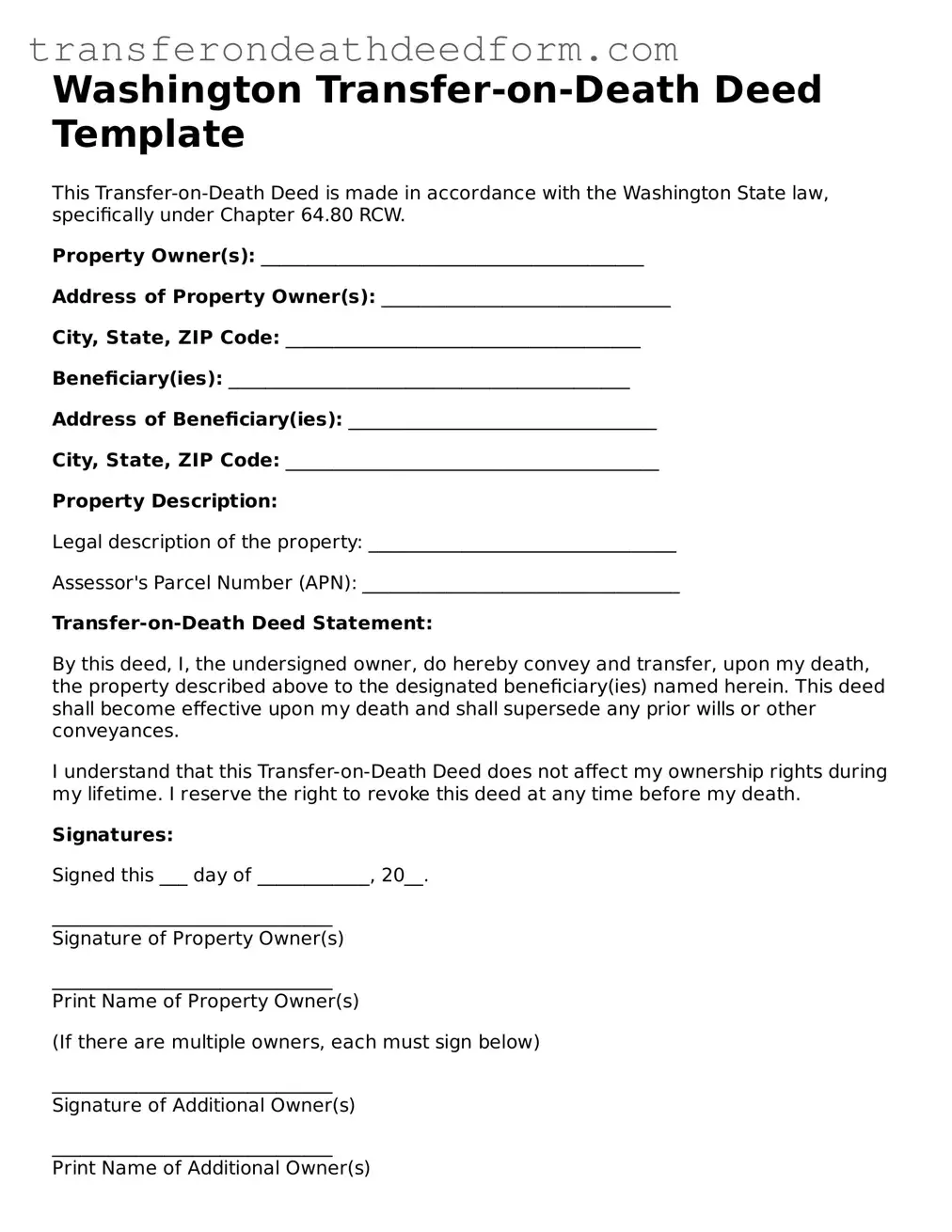Washington Transfer-on-Death Deed Template
This Transfer-on-Death Deed is made in accordance with the Washington State law, specifically under Chapter 64.80 RCW.
Property Owner(s): _________________________________________
Address of Property Owner(s): _______________________________
City, State, ZIP Code: ______________________________________
Beneficiary(ies): ___________________________________________
Address of Beneficiary(ies): _________________________________
City, State, ZIP Code: ________________________________________
Property Description:
Legal description of the property: _________________________________
Assessor's Parcel Number (APN): __________________________________
Transfer-on-Death Deed Statement:
By this deed, I, the undersigned owner, do hereby convey and transfer, upon my death, the property described above to the designated beneficiary(ies) named herein. This deed shall become effective upon my death and shall supersede any prior wills or other conveyances.
I understand that this Transfer-on-Death Deed does not affect my ownership rights during my lifetime. I reserve the right to revoke this deed at any time before my death.
Signatures:
Signed this ___ day of ____________, 20__.
______________________________
Signature of Property Owner(s)
______________________________
Print Name of Property Owner(s)
(If there are multiple owners, each must sign below)
______________________________
Signature of Additional Owner(s)
______________________________
Print Name of Additional Owner(s)
Notary Acknowledgment:
State of Washington
County of ____________________
On this ___ day of ____________, 20__, before me, a Notary Public, personally appeared ______________________, known to me to be the person who executed this Transfer-on-Death Deed.
________________________________
Notary Public Signature
My commission expires: ________________
